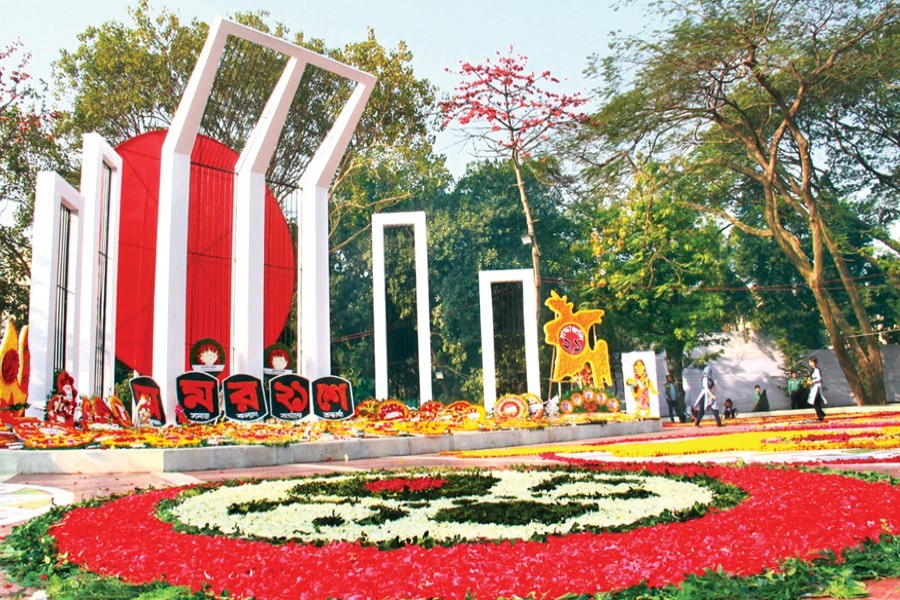The first monument dedicated to the Language Movement was constructed in the very year of 1952, when the streets of Dhaka became soaked in the blood of the Bangla Language Martyrs. The monument was erected on February 23, to pay respects to the martyrs.
The structure was hastily erected on the spot, where Abul Barkat was hit by a killer bullet in the early afternoon on February 21, 1952. The students of the then Dhaka Medical College started the monument's work just before midnight on February 23. By the morning of the 24th, it was completed. Over a dozen young and firebrand students put in their best of efforts and love for the martyrs and the Bangla language to the construction of the monument.
Since the dawn of February 24, 1952, people from all walks began rushing to the monument. However, in spite of the spontaneity in expressing love and respect for the martyrs by the people, the atmosphere was fraught.
The monument, then already known as Shaheed Minar, stood at a place near Barrack-12 for the Medical College students. It was inaugurated twice --- first by Mahbubur Rahman, father of the Language Martyr Shafiur Rahman on February 24. Abul Kalam Shamsuddin, the editor of the now-defunct Daily Azad, opened it again on February 26. The 11-foot tall monument remained standing at the venue for three days. It was demolished by the then Muslim League government in the afternoon of February 26. The Shaheed Minar was once again built by the students. It was inaugurated by Maulana Bhasani in 1956. It was also dismantled later.
The look of the first Language Movement Martyrs' monument had been quite different from the one erected later on the Dhaka University campus. The placing of flowers and flower bouquets on the monument had not yet become popular. In place of flowers, the emotion-choked men and women were seen placing coins, currency notes, valuable ornaments etc on the base of the first two monuments.
The radically new-designed Shaheed Minar was built in 1963. It was jointly conceived by artist Hamidur Rahman and avant-garde sculptor Novera Ahmed. Instead of following the traditional sub-continental trend of building column-like monuments, the duo turned to a highly modernist form. In the imposing work, a bereaved mother with two children on each side of hers comes alive in an abstract style.
The famous song 'Amaar Bhaiyer Rokte Rangano Ekushey February' was revived around this time. Thanks to the song, the Language Martyrs' Day in course of time came to be known as 'Amor Ekushey' or just 'Ekushey'. It took only a couple of years for students and the general people to get accustomed to the trend of walking in procession down the streets barefoot with flowers in hand at dawn. Singing the plaintive 'Ekushey February' song in chorus eventually became integral to the observance of the event. The mourners' destination was the Shaheed Minar where they placed flowers on the basement of the monument.
In the independent Bangladesh, the Ekushey programmes began commencing from midnight. In the meantime, the monument had to undergo another bout of assault; this time it was purported by the Pakistani occupation army. On the night of 25th March in 1971, they destroyed the concrete-made monument by shelling.
The year 1972 witnessed yet another transformed Shaheed Minar; this time the shape remained the same. In independent Bangladesh, the events there would formally start with the placing of flowers on the base of the monument at one minute past 12 midnight. The following morning and throughout the day, the whole compound of the monument would turn into a cultural hub.
In the 21st century, the Central Shaheed Minar in Dhaka and those across the country not only mourn the Bangla Language Martyrs, they also symbolise the indestructibility of Bangla and the Bengalees.


